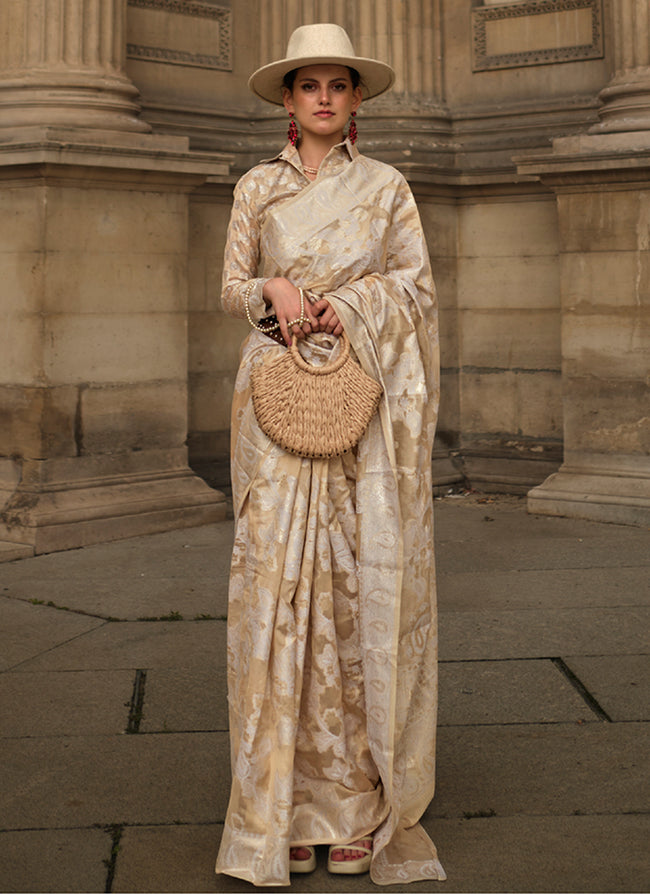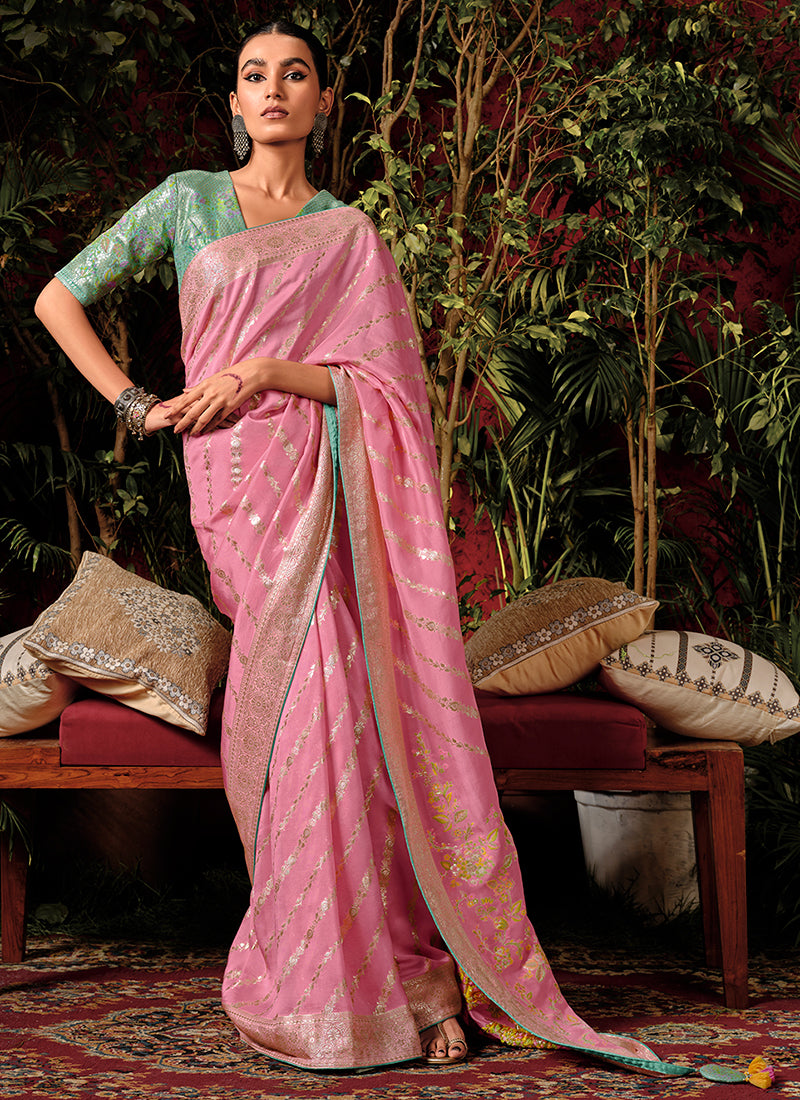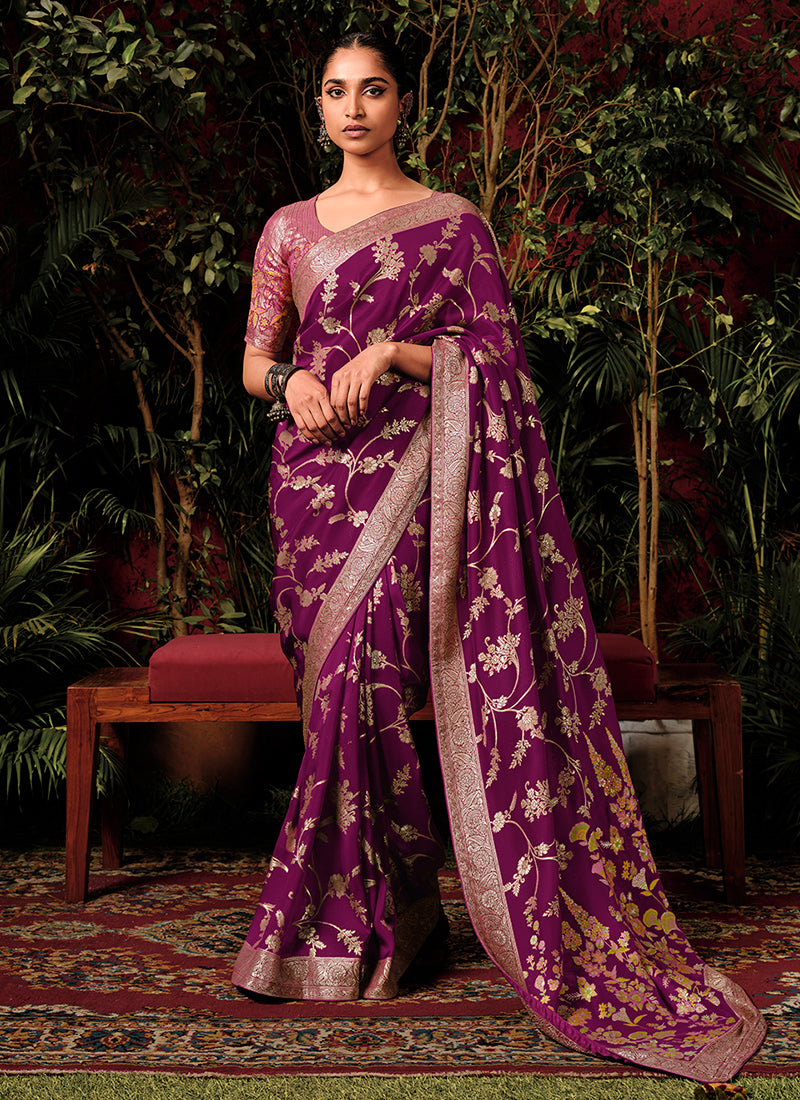The saree, a timeless garment of Indian origin, epitomizes grace and elegance. Spanning centuries, its appeal has remained undiminished, evolving with fashion trends while retaining its cultural significance. This comprehensive guide will take you through the diverse styles, fabrics, and draping techniques of sarees, helping you navigate this elegant attire with ease and sophistication.
Understanding Saree Styles
1. Traditional Styles:
-
Nivi Style: The most common and widely recognized style, the Nivi drape involves tucking the saree into a petticoat, wrapping it around the waist, and draping the loose end over the shoulder. It's versatile and suits various body types.
-
Bengali Style: Characterized by the saree being draped from the back to the front, this style includes pleating the saree and tucking it into the waistband. The pallu is then draped over the left shoulder and extended to the front.
-
Gujarati Style: Similar to the Nivi style but with the pallu draped over the right shoulder, often arranged in a decorative manner. It can be paired with a choli that has a slightly different cut, creating a distinctive look.
-
Maharashtrian Style: Known for its distinctive look, this style involves pleating the saree in the front and tucking it into the petticoat, with the pallu draped over the shoulder and pinned.
2. Contemporary Styles:
-
Pre-Draped Sarees: These sarees come pre-stitched and draped, making them ideal for those who want the elegance of a saree without the hassle of draping it. They are perfect for modern occasions and are available in various designs.
-
Saree Gowns: A fusion of saree and gown, these garments combine the elegance of a saree with the convenience of a gown. They often feature embellishments and are ideal for formal events.
-
Cape Sarees: This style incorporates a cape or jacket over the saree, adding a contemporary twist. It’s a great way to blend traditional and modern fashion.
Choosing the Right Fabric
1. Silk: Renowned for its luxurious texture and sheen, silk sarees are perfect for festive occasions and weddings. Varieties include Banarasi, Kanchipuram, and Tussar silk.
2. Cotton: Ideal for everyday wear, cotton sarees are comfortable and breathable. They come in various prints and weaves, making them suitable for both casual and formal settings.
3. Georgette and Chiffon: Lightweight and flowy, these fabrics are popular for their drape and ease of movement. They are often chosen for evening wear and parties.
4. Velvet: Known for its rich texture and opulence, velvet sarees are perfect for winter and formal events. They often feature intricate embroidery and embellishments.
5. Linen: Combining elegance with comfort, linen sarees are great for warm climates and are often chosen for their understated sophistication and durability.
Mastering Draping Techniques
1. Classic Nivi Draping:
- Start by tucking one end of the saree into the petticoat at the center of your waist.
- Wrap the saree around the waist once, making sure the fabric falls evenly.
- Pleat the remaining fabric and tuck these pleats into the petticoat, ensuring they fall neatly.
- Drape the pallu over your left shoulder and adjust it to your desired length and style.
2. Bengali Draping:
- Begin by tucking the saree into the petticoat from the back.
- Wrap the saree around the waist, making pleats in the front.
- Drape the pallu over the left shoulder and let it hang in front.
3. Maharashtrian Draping:
- Tuck the saree into the petticoat from the front.
- Pleat the fabric in the front and tuck it into the waistband.
- Drape the pallu over the shoulder, and secure it with a pin.
4. Gujarati Draping:
- Start by tucking the saree into the petticoat at the center.
- Wrap it around the waist, creating pleats in the front.
- Drape the pallu over the right shoulder and adjust the pleats and pallu as desired.

Final Tips
- Comfort First: Ensure the petticoat and saree are well-fitted to avoid discomfort.
- Practice Draping: The more you practice, the more comfortable you'll become with different styles and techniques.
- Accessorize Wisely: Complement your saree with appropriate jewelry and accessories to enhance your overall look.
By understanding the various saree styles, fabrics, and draping techniques, you can celebrate the elegance of this traditional garment while adapting it to modern fashion trends. Whether you're dressing for a wedding, a festival, or a casual outing, the saree offers endless possibilities for expressing your unique style.












